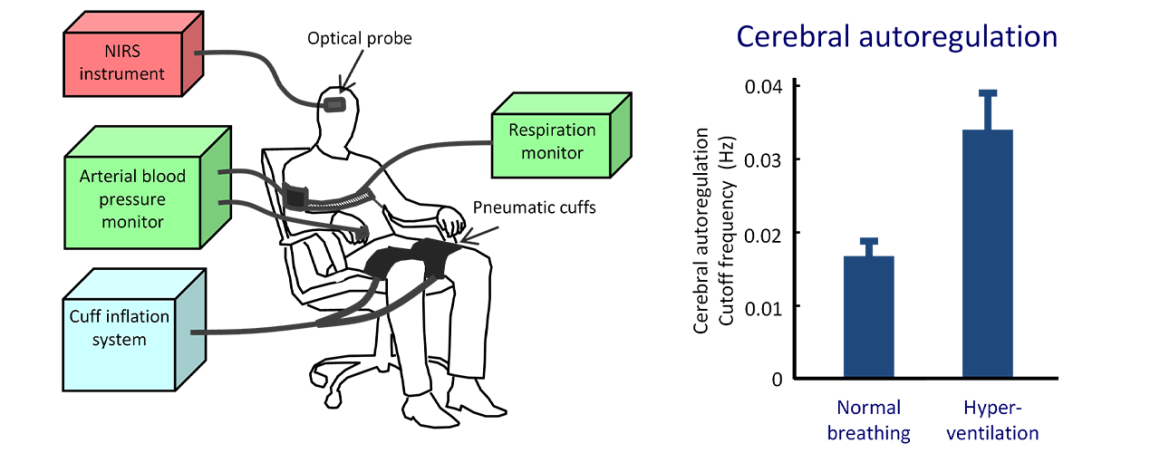CHS measurements of capillary transit time and cerebral autoregulation
Coherent Hemodynamics Spectroscopy (CHS) has been used for measurements of capillary transit time in patients undergoing hemodialysis (HD) and in a group of healthy controls. Figure 1 shows the experimental setup, which includes a pneumatic thigh cuff that is inflated cyclically at seven sequential frequencies (0.03, 0.05, 0.07, 0.08, 0.10, 0.125, 0.17 Hz) and the FD-NIRS system for optical measurements on the prefrontal cortex. The results in Fig. 1 show that longer capillary transit times were measured in HD patients vs. healthy controls, which is an indication of a reduced cerebral blood flow. In fact, the capillary transit time is inversely related to blood flow.
Fig. 1. CHS measurements of capillary transit time in hemodialysis (HD) patients and healthy controls.
CHS has also been used to measure the improved cerebral autoregulation that is associated with mild hyperventilation (see Fig. 2). In this study, rather than performing measurements of hemodynamic oscillations at multiple frequencies, we performed measurements of hemodynamic transients associated with the rapid deflation of the thigh cuffs following a 2-min period in which they have been kept inflated to a pressure of 200 mmHg. This is a time-domain implementation of CHS. The cutoff frequency of autoregulation is a measure of autoregulation effectiveness, and it was found to consistently increase during hyperventilation in the eleven subjects examined.
Fig. 2. CHS measurements of cerebral autoregulation during normal breathing and hyperventilation.
See also:
- M. L. Pierro, J. M Kainerstorfer, A. Civiletto, D. E. Weiner, A. Sassaroli, B. Hallacoglu, and S. Fantini, “Reduced speed of microvascular blood flow in hemodialysis patients versus healthy controls: A coherent hemodynamics spectroscopy study,” J. Biomed. Opt. 19, 026005 (9pp) (2014).
- J. M. Kainerstorfer, A. Sassaroli, K. T. Tgavalekos, and S. Fantini, “Cerebral autoregulation in the microvasculature measured with near-infrared spectroscopy,” J. Cereb. Blood Flow Metab. 35, 959-966 (2015).

